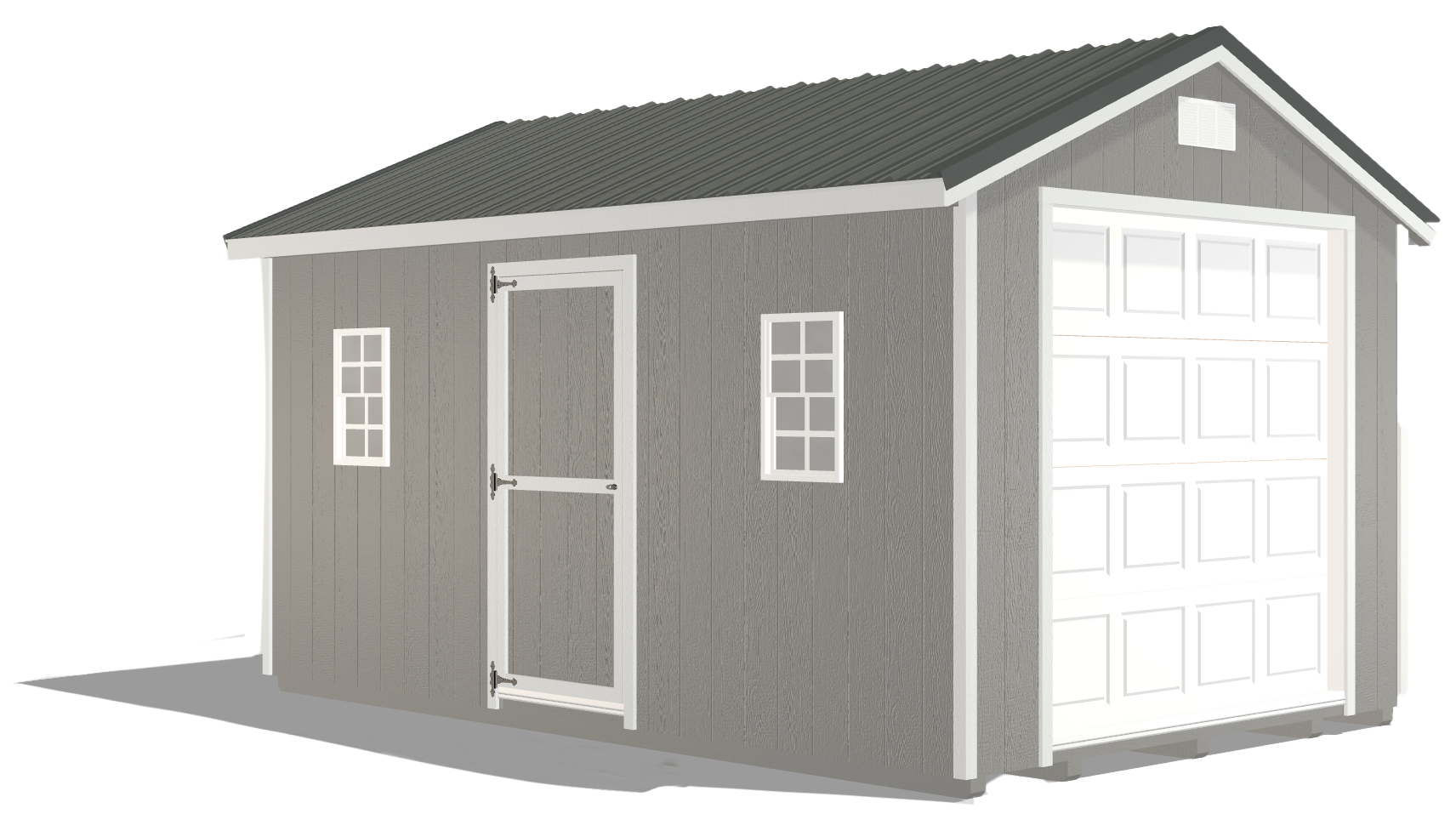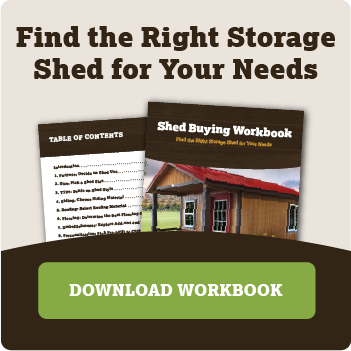Best Shed Foundations 101: Tips for a Level and Sturdy Base
by Dakota Storage Buildings, on February 07, 2024
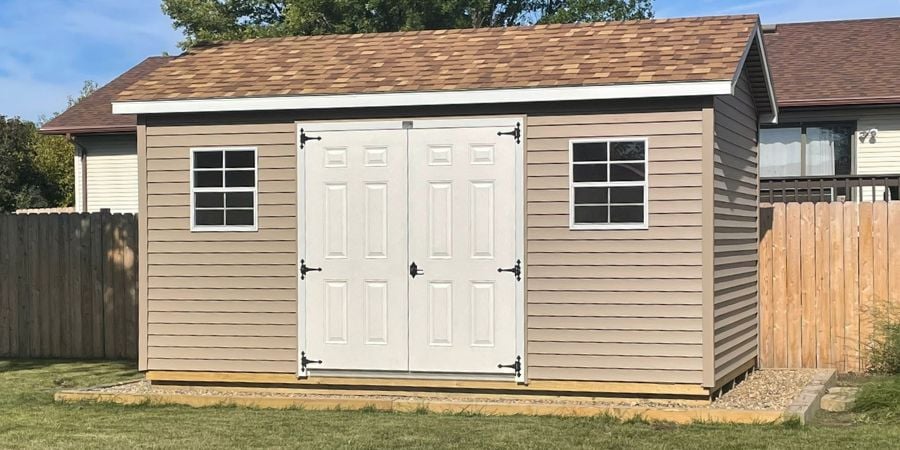
As you await the arrival of new storage sheds, you may find yourself having doubts about the preparatory work for its foundation. It is vital to understand the preliminary yet crucial tasks that must be addressed before your shed can become a functional part of your backyard landscape. The first of these is obtaining the necessary building permit, a step that ensures your shed complies with local zoning laws and building codes. Once the permit is in hand, the focus shifts to establishing a solid and reliable foundation for your shed. This stage is pivotal, regardless of whether you opt for a do-it-yourself approach or decide to hire a professional.
Preparing the site involves not just clearing the land but also ensuring that the ground is perfectly leveled. The importance of a level foundation cannot be overstated. A foundation with even the slightest tilt or irregularity can set the stage for significant issues down the line. An unleveled base is more than just an aesthetic concern; it poses structural risks. It can lead to a warped or twisted frame in your shed, which in turn can cause a host of problems, ranging from misaligned doors and windows to compromised structural integrity.
Laying a proper shed foundation is not just a preparatory step; it is a critical investment in the longevity and functionality of your shed. By ensuring that your shed rests on a well-prepared, level base, you are not only enhancing its appearance but also fortifying its structure against potential complications. It is a step that demands attention, precision, and a clear understanding of the ground conditions of your site.
Choosing Your Storage Sheds' Perfect Location
Deciding which type of foundation to use for your garden shed is significantly influenced by two primary factors: the size of your garden and the specific storage requirements you have. Smaller sheds, similar in size to a modest closet, offer a bit more flexibility. In many cases, they do not require an elaborate foundation and can comfortably sit directly on a patio or similar flat surface. This can be a convenient option if your storage needs are minimal, such as for gardening tools or seasonal items.
On the other hand, larger storage sheds demand more consideration. These structures, particularly those designed to house heavy equipment like riding lawnmowers, generators, or even small vehicles, require a sturdier and more substantial foundation. A solid foundation is essential to support the significant weight of the items stored and to ensure the longevity and stability of the shed itself. A robust foundation, such as concrete or reinforced gravel, becomes indispensable in these scenarios.
When scouting for the perfect spot to place your shed, you must look for a few key elements. First and foremost, look for level ground. A level area not only simplifies the installation process but also contributes to the overall stability and structural integrity of the shed. An uneven foundation can lead to issues like warping or cracking, which can compromise the shed's durability and safety. Equally important is good drainage to ensure that water does not accumulate around or under your shed, which can cause wood rot, rust, or other moisture-related damage over time. Assessing the natural slope of the land and the direction of water flow during rain can help you determine the best location.
Choosing the Best Material for Your Shed Foundation
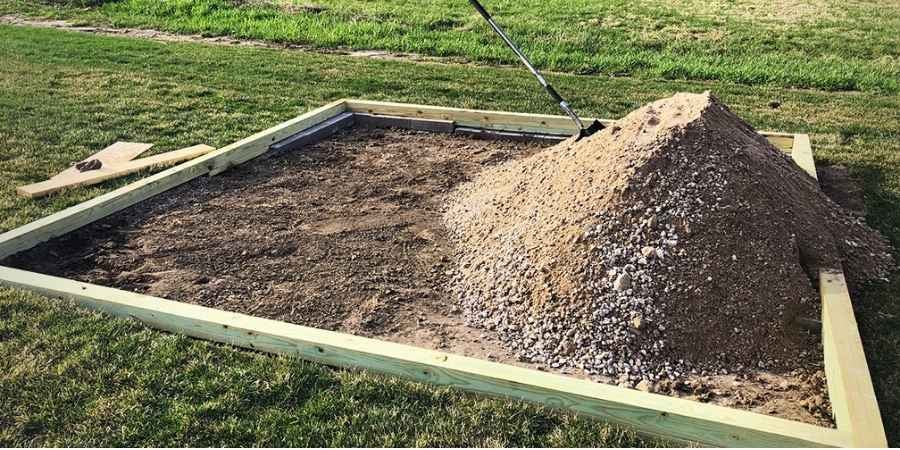
When it comes to selecting the right material for your shed foundation, the choices you make can have lasting implications on the durability, functionality, and maintenance of your shed. Let’s explore the most common foundation materials.
Class 5 Gravel
Gravel, particularly Class 5 gravel, is a popular choice for shed foundations due to its excellent drainage properties and relative ease of installation. This type of gravel consists of a mixture of sand and small stones, providing a stable and well-draining base. It is particularly suitable for medium-sized storage sheds used to store garden tools, bicycles, or workshop spaces. The key advantage of a gravel foundation is its cost-effectiveness and the fact that it does not require specialized skills to install. However, it is important to ensure that the gravel layer is thick enough and properly compacted to prevent the shed from sinking or tilting over time.
Concrete Slab Foundation
For those seeking a more permanent and robust solution, a concrete slab foundation is often the best choice. This type of foundation involves pouring concrete into a prepared area, creating a solid and level base for your shed. It is ideal for larger storage sheds or those intended to store heavy equipment such as tractors, large power tools, or vehicles. The advantages of a concrete slab include its longevity, strength, and low maintenance. However, it is more expensive than gravel and usually requires professional installation. Concrete can also be prone to cracking in freezing temperatures if not properly installed, so it is important to consider the climate in your area.
Wood
Wood foundations, including pressure-treated lumber or a plywood subfloor, offer a balance between durability and cost. They are particularly useful in damp areas or where raising the shed above ground level is necessary. Wood foundations can be custom-built to fit any shed size and can be a DIY-friendly option for those comfortable with basic carpentry. When using wood, it is crucial to ensure that the material is properly treated to resist moisture, pests, and decay. The main drawbacks of wood foundations are their susceptibility to rot if not properly maintained and the potential need for replacement over time.
Blueprint for a Strong Shed
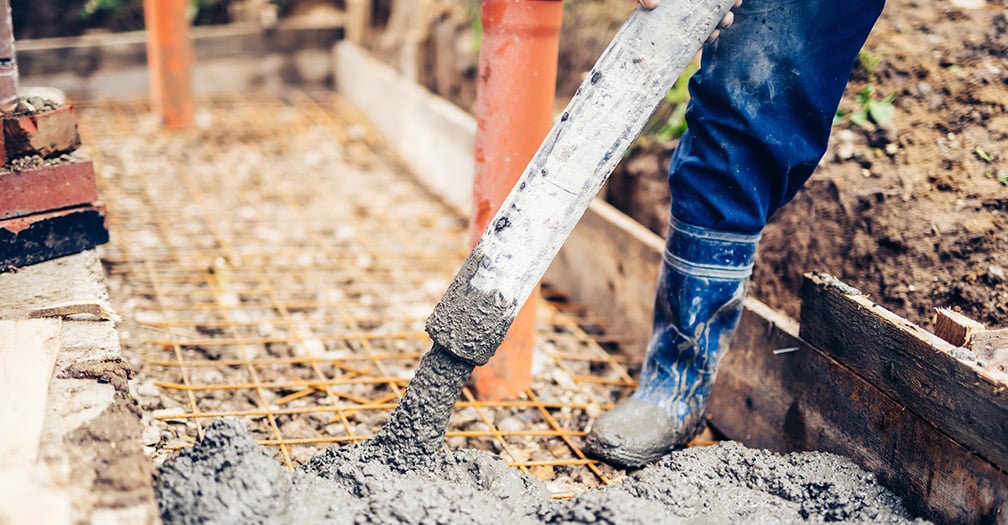
Laying the right foundation for your shed is an intricate process that involves several crucial steps, each vital to ensure the stability, durability, and functionality of your shed.
1. Site Selection and Preparation
The journey to a solid foundation begins with the selection of an ideal area for your shed. This area should be easily accessible, clear of any overhanging trees or wires, and benefit from good natural light. The site must be cleared of all vegetation, rocks, and debris to prevent any organic material from decomposing under your shed, which might lead to uneven settling. Measuring the space accurately is crucial; the area should be slightly larger than the shed dimensions to ensure easy installation and future maintenance.
2. Building a Temporary Frame
The next step is to construct a temporary frame using 2x4 ft. lumber around the foundation's perimeter. This frame acts as a mold for pouring gravel or concrete and must be perfectly level and square, as it will directly influence the level of your foundation.
3. Fastening the Frame
Securing the frame to wooden or steel stakes from the outside is a crucial step in laying your shed's foundation. This method of fastening provides a strong and stable boundary for the foundation material. By anchoring the frame externally with stakes, you not only ensure that it retains its shape during the filling process but also facilitate its eventual removal. The external fastening makes it easier to disassemble and remove the frame once the foundation material is set and compacted.
4. Filling with Base Material
The frame is then filled with 3-4 in. of the chosen base material. If you opt for gravel, it should be evenly spread and compacted to prevent settling. For concrete foundations, pour the concrete mix and level it using a screed board. Including reinforcements like wire mesh or rebar is a wise consideration in concrete foundations, particularly if heavy items will be stored in the shed.
5. Leveling and Compacting
Leveling is essential for both gravel and concrete foundations. For gravel, use a straight board or a rake to ensure evenness, followed by compacting with a hand tamper or mechanical compactor. For concrete foundations, use a float to smooth the surface after leveling, ensuring a clean finish and aiding in water runoff.
6. Final Touches and Curing
While it is not an essential step, employing a compactor to finalize your shed's foundation can have significant benefits. This additional step of compacting ensures a more uniform and stable base, facilitating a smoother delivery process. When the foundation material is tightly compacted, it significantly reduces the likelihood of settling or shifting over time. Taking the time to compact the foundation material properly can greatly enhance the longevity and stability of your shed, ensuring it remains level and secure for years to come.
7. Frame Removal and Site Cleanup
Once the base material is set and compacted, or the concrete has cured, the temporary frame can be carefully removed. Cleaning up the surrounding area by removing any excess material or debris ensures a neat finish and prepares the site for the shed installation.
By meticulously following these steps, you can lay a proper foundation that supports your shed while extending its lifespan. A well-laid foundation ensures that your shed remains stable, level, and functional, safeguarding your stored items and providing peace of mind. Taking the time to lay the foundation correctly can prevent future problems and additional expenses.
Sturdy Foundations, Stronger Sheds
To ensure that your shed not only meets but exceeds your expectations in terms of durability and functionality, it is absolutely essential to adhere to these steps for a level and sturdy foundation. A well-laid shed foundation prevents a multitude of issues, ranging from minor annoyances like misaligned doors to major concerns like structural compromise due to uneven settling. By following these guidelines when you buy a shed, you are not just constructing a foundation; you are building confidence in a storage solution that will robustly stand up to the elements, year after year. Are you ready to invest in a shed but need more guidance on where to start? Our free resource, “The Shed Buying Workbook” is the perfect place to start. Download your copy today!


















